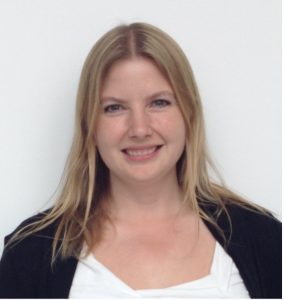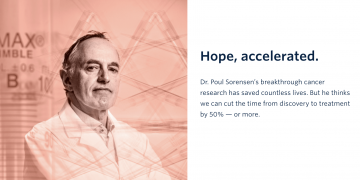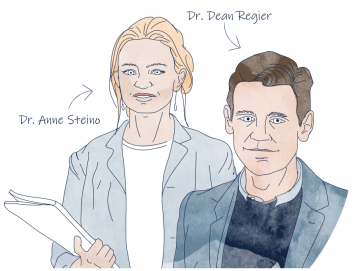Translational Medicine Rounds – 3 APRIL 2023
Bringing Spatial “Omics” From Glass to Clinic
Molecular and Advanced Pathology Core (MAPcore)
Speakers: Julie Ho and Shelby Thornton
Recording: Video (password: NVZ0L+q*)
Summary: As a key platform of the FoM’s Academy of Translational Medicine, MAPcore was established in 2021 to provide UBC researchers with the necessary infrastructure to validate genomic and biological discoveries into clinical diagnostic or therapeutic targets. Equipped with two Leica Bond Rxs, a high-throughput Leica AT2 brightfield slide scanner, a Zeiss AxioScan.Z1 fluorescence slide scanner, a NanoString GeoMx Digital Spatial Profiler, and HALO image analysis suite, MAPcore is primed to support basic and advanced histopathological and AI research needs.
Introduction
Research core platforms (also called research core facilities or shared research platforms) are often referred to as centralized, shared resources which provide researchers access to any combination of specialized equipment and technology, as well as expert personnel, services, and even training.
This framework allows researchers to continue to concentrate on aspects of their investigations where they themselves are specialists, while benefitting from the pre-existing expertise and support offered by the research core platforms.
Core platforms help accelerate discovery towards clinic use and other advancements. Outcomes include promotion of inter-disciplinary collaboration, cooperation, and high-quality work, alongside a reduction of costs and time.
Resources for UBC Researchers
Michael Smith Laboratories
The Michael Smith Genome Sciences Centre Sequencing Platform
A high-throughput, large-scale DNA and RNA sequencing and analysis facility that has been designed to maximize analytical capacity, diversity, efficiency, scalability and flexibility. The platform is one of the largest of its type in Canada and is well recognized internationally.
The Michael Smith Genome Sciences Centre Bioinformatics and Data Analysis Platform
A team of bioinformaticians, including sequence analysts, database experts, IT specialists and quality assessment professionals, offer data analysis services for transcriptomic, genomic, and epigenomic sequencing studies.
Proteomics Platform at the Michael Smith Genome Sciences Centre
Performs collaborative proteomics research to characterize and quantify the changes to proteins and the proteome that drive tumourigenesis with the goal is to identify and validate therapeutic targets and biomarkers for the translation of genomics information into clinical practice.
Life Sciences Institute
The LSI houses seven Scientific Facilities designed to strengthen our research, which is essential for maintaining our international competitiveness. Our Core facilities are managed by skilled researchers and technicians, who facilitate efficient and effective delivery of key technologies, generate technological knowledge, and train people across various disciplines.
A full list of Life Science Institute (LSI) Facilities and Core Services can be found here.
LSI Scientific Facilities
Proteomics Core facility at the Michael Smith Laboratories and the Life Sciences Institute
Offers a broad range of services, from mass confirmations to large-scale quantitative proteomic screens, along with all the associated bioinformatics.
LSI Quantitative PCR Core (QPCR Core)
Advanced Structural Biology for Re-emerging Infectious Diseases (ASTRID)
ASTRID supports research into the structural analysis of proteins and protein-protein interactions through a group of shared facilities and equipment. These include an NMR Spectroscopy Unit (Contact: Lawrence McIntosh); an X-ray Crystallography and Crystallization Robotics Unit (Contact: Natalie Strynadka), and a Bio-analytical Unit featuring Isothermal calorimeters (Contact: Filip van Petegem), Dynamic light scattering with plate reader (Contact: Michael Murphy), and Multiangle light scattering (Contact: Lindsay Eltis).
The Bioinformatics Core provides consultation, training, and analysis services for projects involving whole genome sequencing, RNA-Seq, ChIP-Seq, and more. Users are encouraged to come in for a consultation at the start of any project as well as after acquiring data (Contact: Stephane Flibotte).
Biofactorial High-Throughput Biology Facility
Biofactorial is equipped with high-throughput automation infrastructure, including for liquid handling and dispensing, plate reading, cell plating, colony picking, and library preparation for sequencing, and additionally provides access to metagenomic and chemical compound libraries for screening (Contact: Tom Pfeifer).
Life Sciences Institute Imaging (LSI IMAGING)
LSI IMAGING provides access to state-of-the-art equipment for super resolution and confocal microscopy, high content imaging, live cell imaging, and analysis software. Users benefit from expert training and support on all instrumentation (Contact: Guang Gao).
ubcFLOW provides researchers in academia and industry with access to high-end flow analyzers, and flow sorting services. Users additionally benefit from in-depth training courses and expert advice on application development (Book).
Single Cell Imaging Analytics (ubcCYTOF)
ubcCYTOF provides researchers in academia and industry with access to high-end flow analyzers, flow sorting services, and CyTOF. Users additionally benefit from in-depth training courses and expert advice on application development (Book).
The Proteomics Core Facility (PCF) offers a broad range of services, from mass confirmations to large-scale quantitative proteomic screens, along with all the associated bioinformatics. We are in the process of developing metabolomics capabilities and will update our services soon.
Stem Cell and Genome Engineering (link not yet available)
LSI Core Services
The LSI Equipment Services Workshop provides on-campus support for the repair and maintenance of lab equipment, parts design, fabrication, and modification, as well as consultation services (Contact: Adam Suen).
The LSI Stores provides the LSI community with a convenient source for common lab supplies at reduced costs, as well as free access to dry ice, glass washing detergent, biohazard bins and bags, lab coats and lab coat laundry service (Contact: Rod Hanning).
LSI Quantitative PCR Core (QPCR Core)
The QPCR Core offers free training and use of real time PCR systems such as BioRad Opticon and Quant Studio, as well as a QX200 Droplet Digital PCR system, for quantifying nucleic acid targets (Contact: Aaron Bogutz Blair).
The Facility for Infectious Disease and Epidemic Research (FINDER)
FINDER is a 6,700-sq-ft containment level 3 facility offering self-contained suites for microbiology, proteomics, imaging, flow cytometry, and freezer storage, to support research in bacterial and viral infectious diseases, and development of vaccines and therapeutics for risk group 3 pathogens.
High Resolution Macromolecular Cryo-Electron Microscopy (HRMEM)
HRMEM provides researchers with resources for high-resolution cryo-electron microscopy, including Talos, Glacios, and Krios microscopes, and equipment for sample preparation.
Centre for Disease Modelling (CDM)
CDM is part of the UBC Animal Care and Use Program (ACUP), a University-wide program and covers all UBC persons who work with animals in research and teaching.
LSI Shared Equipment
If your research receives support or services from an LSI Scientific or Core Facility please mention the appropriate facility in your acknowledgments using the following sample text or an appropriate variation of it: ‘This work was supported by Life Sciences Institute Cores (X and X), supported by the UBC GREx Biological Resilience Initiative’
Vancouver Prostate Centre
Laboratory for Advanced Genome Analysis (LAGA) at Vancouver Prostate Centre
Integrative analysis of multi-omics data for discovery and functional studies Core: Specialising in the generation, processing, statistical analysis, integration, and visualization of high-density genomics and proteomics data for translational research.
Molecular Pathology Core at the Vancouver Prostate Centre
Offers clinical grade, high throughput analytical services. Access to live human tumour tissues allows for identification of new tumor targets, validation of function, and the development of new tumour models.
Computer-aided drug development at Vancouver Prostate Centre
Offers Deep Docking technology, an AI-based approach that enables virtual screening (docking) of billions of molecular structures in a rapid, accurate fashion.
BC Cancer Research Institute
The Molecular and Advanced Pathology Core (MAPcore)
Offers spatical “omics” services including histology, histochemistry, and imaging services of protein and mRNA from tissue sections, to translate omics finding into clinical utility by bridging the life sciences at UBC with clinical expertise at Vancouver General Hospital and BC Cancer.
The Cancer Single Cell Dynamics Observatory
Provides access to technology for single cell genomic studies of cancer cells to understand their origin, treatment resistance, and the evolution of relapsed disease.
BC Women’s and Children’s Hospital
BCCHR Analytical Core for Metabolomics and Nutrition (ACMaN)
Offers various lab analytical techniques and instrumentation to enable research on metabolic pathways, nutrients and their metabolites as well as develop new methodologies as required by researchers from BCCHR, UBC, other universities and academic institutions, or industrial partners.
UBC Platform for Excellence in Metabolomics (PLEXMET)
A cross-campus platform connecting the BC Children’s Hospital Research Institute Analytical Core for Metabolomics and Nutrition, the UBC Proteomics Facility and the UBC Nutritional Biomarker Laboratory. Metabolomics provides functional validations of genomics findings for disease diagnosis, therapeutic drug development and treatment progression.
Gut4Health Microbiome Core Facility
Centralized and cost-effective resource for processing and storing biological specimens, and sequencing and analysis of microbial communities, including genomic and metabolomic studies.
Pharmaceuticals Sciences
UBC Sequencing + Bioinformatics Consortium
UBC-supported shared facility created to bring together the services and expertise previously offered by the UBC Sequencing Centre, the Biodiversity Research Centre NextGen Sequencing Facility and the NAPS Unit. Provides end-to-end support for any sequencing project, with rapid turnaround times.
Pharmaceutical Sciences Analytical Suite
Provides high-quality services for the scientific community, incl. NMR spectrometer, mass spectrometers, confocal microscope and a Mastersizer particle size analyzer.
Data analytics, statistics and informatics (DASI)
Assists investigators in activities across the research cycle, including statistical experiment design, statistical support for grant submissions, statistical analysis plans, statistical analysis and consultation, and scientific writing.
Nanomedicines Innovation Network (NMIN)
NanoCore (Translational NanoMedicines Formulation and Characterization Core Facility): provides state-of-the-art nanoparticle formulations and a standardized nanomedicines characterization service to enable potent therapies that can be readily manufacture.
PharmaCore (Preclinical, Scale-up Manufacturing & Project Management Core Facility): supports in vitro and in vivo studies as well as scale-up, stability testing and manufacturing needs to help exemplify commercial potential.
eHTA core (Early Health Technology Assessment Core Facility): provides education, coaching, and contract research services on the use of eHTA to inform a broad range of R&D and commercialization-related activities and decisions
Where Else to Look
Canadian Foundation for Innovation
UBC Shared Research Platforms and Facilities (example: Upright Open MRI)
UBC Institutional Program Office’s Infrastructure Database
FLOW Facility Testimonials
As a new group starting in 2019, I have great support from the FACS facility in LSI. My research in the gut microbiota requires very specific sorting conditions and required a lot of optimization – we would have not been able to achieve this without the continued support we receive from Andy Johnson. Importantly, the affordability of this service has meant that we have been able to start new lines of research in the lab that we would have otherwise not been able to explore.
-Carolina Tropini
As a co-director and user of the UBC Flow facility, I can add my voice to the strong support of this facility. The facility is essential for both new and old investigators alike. It offers a wide range of instruments that no one investigator can fully support or maintain. The facility thus offers unparalleled opportunities for researchers to sort rare cell populations and to analyze complex cell populations using multi-color flow cytometry, in an affordable and accessible way. Several new faculty hires depend on sophisticated cell sorting and analytical instrumentation for their cutting edge research and it is a factor in their decision to come to UBC.
-Pauline Johnson
As a new PI (start in January 2021), the flow cytometry core facility at UBC has been an incredible resource. It provides both affordable training and instrument use that mean that all of my students can get trained and carry out experiments without being resource limited. Operating our own flow cytometer would’ve been out of the question when starting my laboratory, and the core facility is part of the reason we’ve been able to become operation and productive in a short time period.
-Anna Blakney
My research program highly involves engineering and quality controlling of cells that requires flow cytometry analyses daily. Having the flow facility in the building has been greatly accelerating our researches supported by the Canada Research Chair program, Allen Institute, multiple CIHR Project Grants, CFI etc.
-Nozomu Yachie
Most of the experimental work done in his lab requires both flow cytometry and cell sorting on a regular basis. They use it for measuring gene expression, verifying cell identity, and creating cell lines. The comparatively low costs at UBCFlow enabled them to perform cell analysis and sorting as much as was needed, ensuring that their science was done robustly and eliminating concerns about costs draining limited start-up funding. This is especially critical when working with PSCs, which can start to differentiate and must be validated regularly by flow. The Boer lab’s recent success in experiments and acquiring funding would not have been possible without the support of UBCFlow.
-Carl de Boer


 A call for proposals highlights a collaborative effort between the Government of Canada and the Government of Germany.
A call for proposals highlights a collaborative effort between the Government of Canada and the Government of Germany.



 Congratulations to the recipients of the 2023/2024 Research Excellence Clusters initiative.
Congratulations to the recipients of the 2023/2024 Research Excellence Clusters initiative. The ATM is excited to hear about the announcement of a new National Biomanufacturing Training Centre (NBTC), which will be located at the British Columbia Institute of Technology (BCIT). The first of its kind, the NBTC is predicted to finish construction by the end of 2023, with training beginning in 2024. The$7.2 million investment (as provided by the Government of BC and Pacifica) is an important aspect of a multi-institutional province-wide effort to provide talent for the rapidly growing life sciences and biomanufacturing industry in BC.
The ATM is excited to hear about the announcement of a new National Biomanufacturing Training Centre (NBTC), which will be located at the British Columbia Institute of Technology (BCIT). The first of its kind, the NBTC is predicted to finish construction by the end of 2023, with training beginning in 2024. The$7.2 million investment (as provided by the Government of BC and Pacifica) is an important aspect of a multi-institutional province-wide effort to provide talent for the rapidly growing life sciences and biomanufacturing industry in BC.